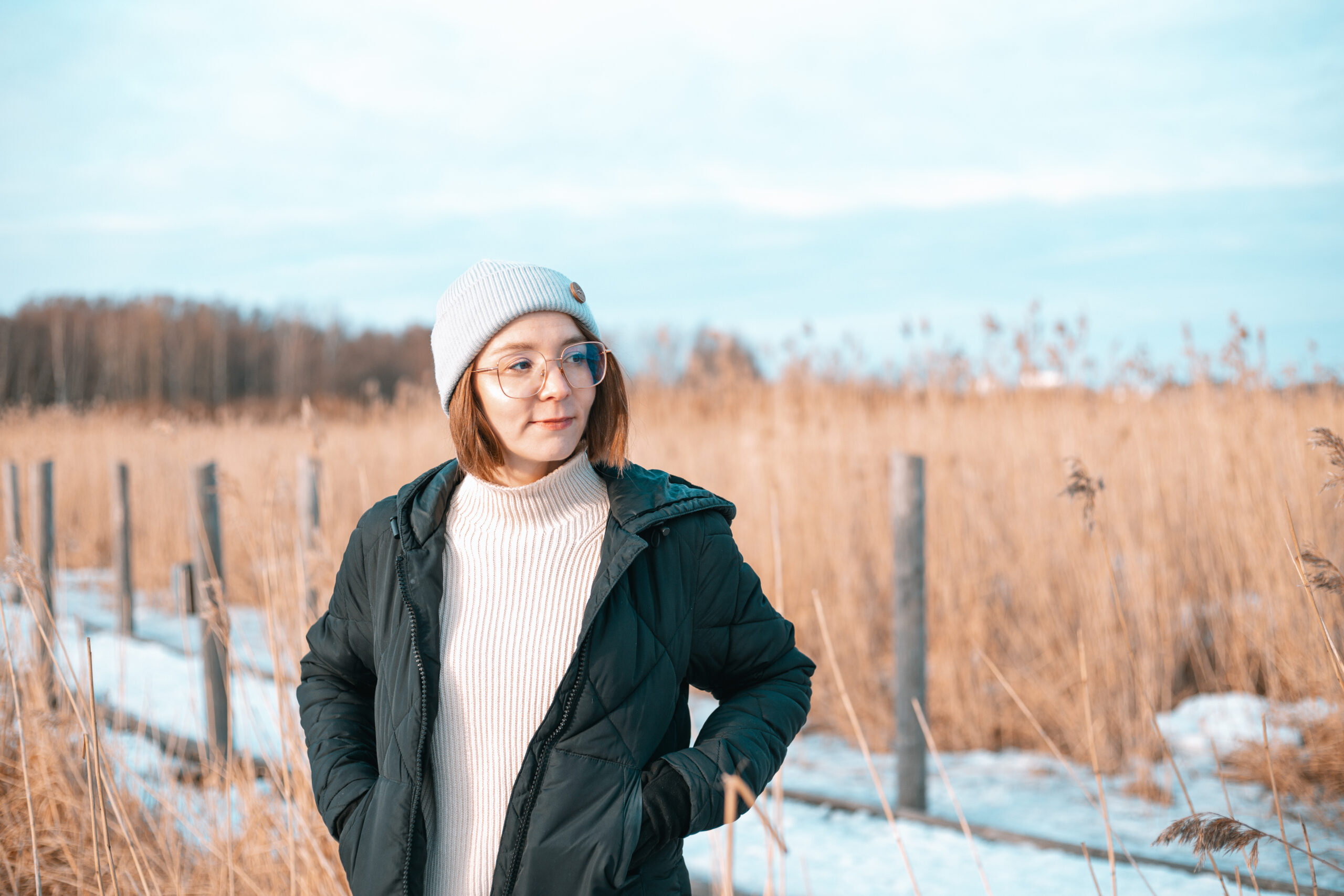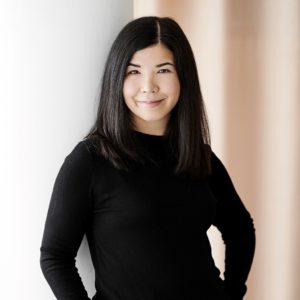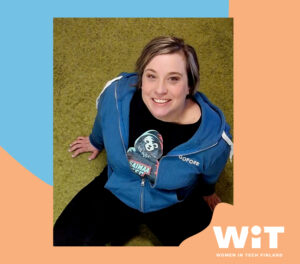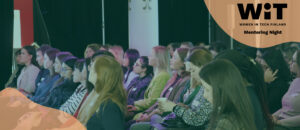The most valuable lesson I have learned so far is the ability to believe in my expertise: the ability to grow into calling myself an expert. When I started researching my specialization, environmental web design, there were no materials to draw from. As I researched more and more, it was hard at first to consider myself an ‘expert’. But now I fully believe that when you are interested in something and put effort into learning every detail, it is appropriate to call yourself an expert – I have learned to see myself for who I am.
I work as a UI/UX Designer at Taiste, although this is not what I initially studied. My first degree is in Fashion Design or Fashion in general. I completed these studies with a double degree in Germany in Fashion and Clothing Design and Print Design; that is why I consider I have a more traditional background in product design. After graduating, I worked in fashion sales and retail, did some visual merchandising and worked as a manager in clothing stores. The shift to another type of design came out of practicality: the store I was working for closed all of their branches in Finland, so I was out of a job–, but it also came from the actual job: seeing first-hand the massive volume of clothes sold, made me realize this was not my place, since it did not match my environmental values.
The question I proposed to myself was: Is there any type of design that does not focus on creating physical products, which are so incredibly polluting? This led me to Digital Design. I studied at Metropolia University of Applied Sciences; the name of the degree back then was Digital Communications.
From the get-go, my studies were eye-opening and nicely challenging for me. The degree was hands-on, centred on user experience design: we created personas, learnt to do user mapping and user journeys, and wireframing. I remember that already in the entrance exam we had to code a website, which I was not used to doing. I also got a taste of working life since we had a semester when we operated as a production office: we worked on billable projects, so we got the opportunity to experience the practical process already in school.

Karoliina Lundahl, UI/UX Designer, Taiste
Sustainability and environmental web design
I specialize in sustainability, which is an umbrella concept for all kinds of accessibility and inclusion in web design. I wrote my thesis on Environmental Web Design because I wanted to explore the environmental impact of my work in my everyday job as a UI/UX designer: all the digital products we create produce carbon emissions – the website has data that goes somewhere; this data is of course hosted physically: how much data are we transferring, and for how long distances is it traveling? I wanted to understand how we can affect or reduce those.
Besides environmental web design, sustainability also includes ethical design, inclusivity and diversity, and accessibility, so users can access and use websites from a variety of devices. My work as a UX/UI designer entails explaining the idea to the client, defining what are the solutions we’re pursuing, and going for it: drawing paths, wireframing, creating information architecture, and seeing what type of content goes where. Progressively we move deeper, always checking with the client, perhaps weekly, to ensure we are following their thoughts. It is interesting because we play with two perspectives: as designers we think from the user’s point of view, and the client comes with the business side, so the challenge is to merge these two thoughts into a functional service.
Since I have been at Taiste I have worked on the same project, which is still ongoing and growing; we create many products for the same project. I started when there was only one design, and it has been two years of seeing it grow.
‘At Taiste, people are allowed to be people’
After two years here, I can confidently say that I like Taiste. In my internships, I had the opportunity to transition to a full-time job, or at least apply for it, yet I decided to explore other environments that would fit me better. I could not be happier with the decision: I find it important to find a workplace where you fit, and that is Taiste for me. The company matches what I need in a workplace because the culture here is completely accepting. People are allowed to be people: we are humans, we have emotions, we have frustrations and bad days, and all of that is allowed here.
I also can say that although I still make clothes all the time for myself, I like this type of design more than fashion design: I enjoy the systematic approach, and especially in this project I am working on, we are creating something new without a predecessor –this means a lot of preparatory work, client work, getting them to agree with our points of view. There are parts of the work that remain the same as with fashion: at least the Finnish way of designing things is “form follows function”, which is also what we do in UI/UX design, but at the same time I can see how I am transferring skills from one field to the other: working in retail, I had to communicate with so many different clients, and that exposure to different points of view helps a lot nowadays when working within a big team and working with the clients themselves.
Reframing how we think about ‘women in tech’
Why is it that women in leadership positions have to more or less always adopt a certain “roughness” to have their voices heard? Shouldn’t we also be talking about how male colleagues must learn to listen better? In Taiste, I have male colleagues who are open-minded, have softer values, and are ready to listen. It makes a huge difference. Of course, I have faced experiences where, as a consultant, I don’t feel listened to by a client, because I am a ‘young woman’. But I always find my colleagues have my back –supporting me, being my allies, believing in me. And I think this is a huge factor in how I navigate these unfortunate experiences successfully: to have a team -including male colleagues!- that vouch for me and my professional skills.
We need to approach the conversation of ‘women entering the tech field’ with an open mind: there are engineers, and developers, in tech. Sure. But there are also people working in marketing, HR, and project management. As a designer, my work embodies this hybridity very much: I work in the tech field, but I am a designer, and I don’t constrain myself to the definition of “tech”. I have to admit I have never considered myself as working in tech. For me, it has always been about design: even if it is a complex solution for an electronics provider, I am still designing.
I think it is fundamental to acknowledge that as women when we try something and it does not work out, we tend to blame ourselves for it – when I did my internships, I did not feel they were ‘my places’, and yet I questioned my career choice: is this for me? But then I started to see that it is not about my choices; it is about finding a place that is a good match with me and my values. It is okay to try out different places, combinations, and dynamics until you find your place.
A design recommendation
For any professional working with web design, I have a personal recommendation: the book ‘Sustainable Web Design’ by Tom Greenwood. It gives quite a wholesome review on how to design more sustainable websites that are not only efficient for the users but also for the planet. For any professional working with web design, I have a personal recommendation: the book ‘Sustainable Web Design’ by Tom Greenwood. It gives quite a wholesome review on how to design more sustainable websites that are not only efficient for the users but also for the planet.




